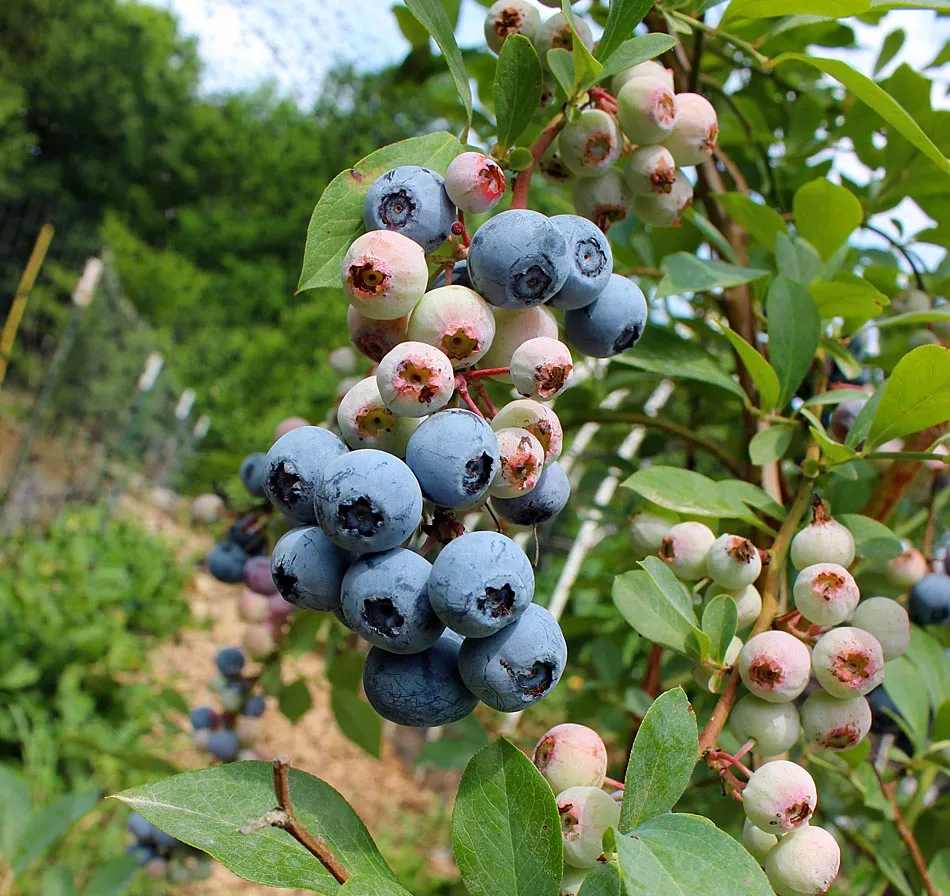

When people ask me what they should plant first in the garden, I always ask, "Do you like blueberries?" and if the answer is yes, I tell them to plant blueberry bushes first. Blueberries are not only delicious, they are full of antioxidants. Blueberry bushes have beautiful bright red fall colors making them lovely ornamental bushes in an edible landscape. And as a bonus, blueberry bushes are long lived perennials that can survive up to sixty years!
Important Factors to Growing Blueberry Successfully
The key to blueberry growing success is to pick the right cultivars for your climate.
The cultivars include Northern Highbush, Southern HighBush, Half-High Hybrids, and Rabbiteyes. I am in Southeastern Oklahoma with hot & humid summers and fairly mild winters, so I have the Rabbiteyes (Vaccinium Ashei) cultivar for my area.
It is also important to know blueberry bushes require other varieties of the same cultivar for cross pollination.
For example, I have Brightwell, Climax, Austin, Tiftblue, Premier & Powderblue blueberry bushes planted close to one another for cross pollination. These varieties are all in the Rabbiteyes cultivar.
In most cases when people say their blueberry bushes do not produce blueberries or produce poorly is because they are unaware that they need more than one variety of blueberry in the same cultivar in order to cross pollinate and produce abundant fruit.
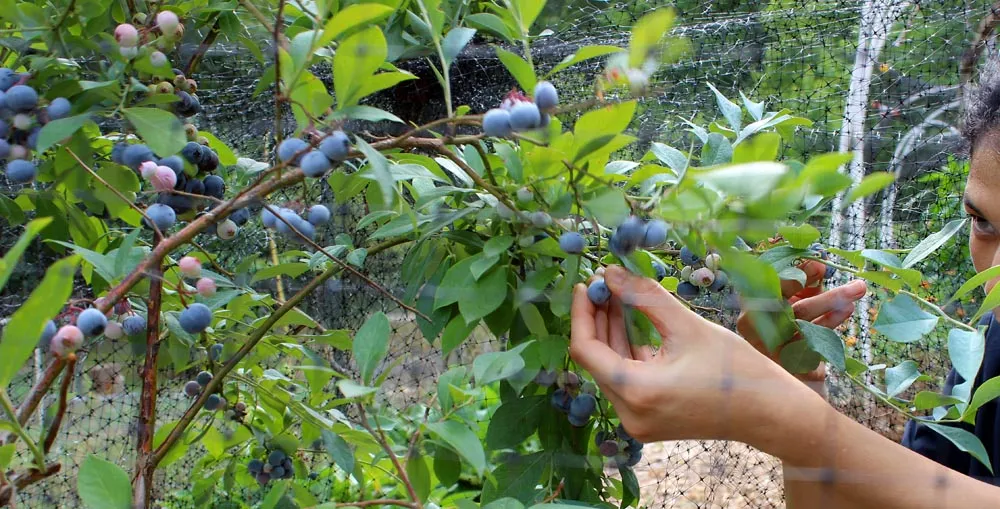
Blueberry planting Specifics
There are three basic requirements for growing healthy blueberry bushes.
- An acidic root zone (a PH between 4.8 and 5.5)
- Consistent moisture
- Lots of sunshine
Blueberry bushes have shallow roots located in the uppermost soil layer and they rarely reach beyond the dripline of the plant. This means blueberries rely on the grower to provide water in the root zone when there is a dry spell. Don't let a dry week go by without watering. They love to be mulched thickly. This will help keep consistent moisture for the root zone and reduce soil temperature.
Water is especially critical in the first year of a blueberry plant's life, so be sure to water your new plantings weekly if mother nature is not helping. The first year is very important for new blueberry bushes if you want healthy and long lived plants that will provide you with bountiful harvests all Summer long. Even though blueberries love moisture, it will not do well in a waterlogged location. So amend your planting holes accordingly if you have heavy clay content in your soil.
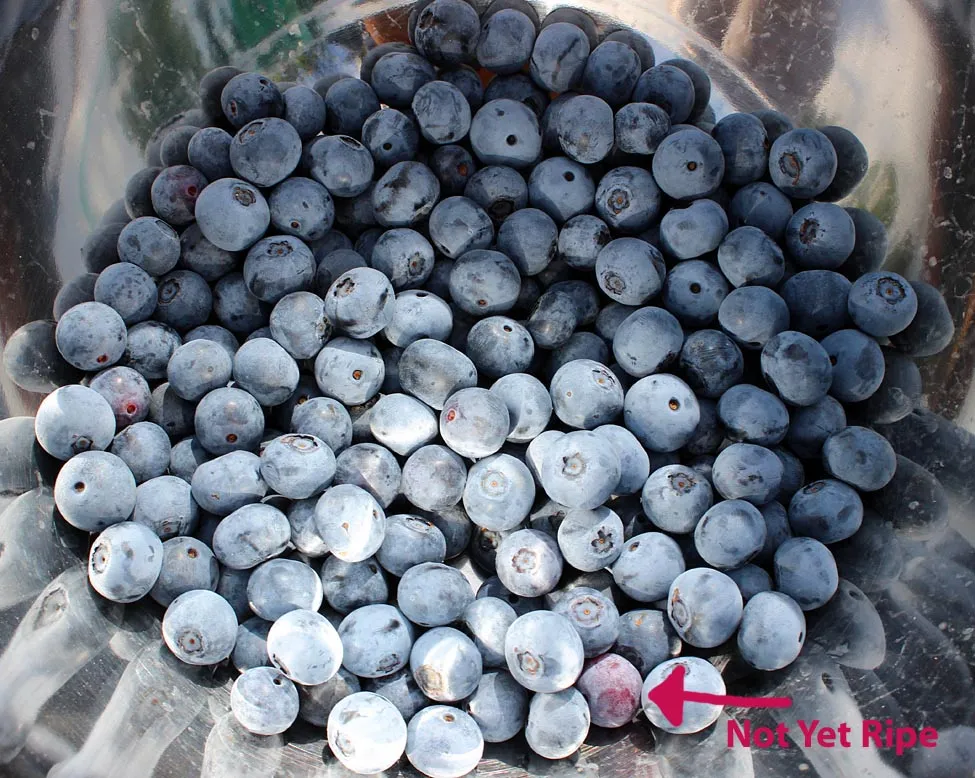
Long Harvest Season
The blueberry harvest season in our area usually starts in June and runs through mid July. Blueberries ripen over a long season and hold well on the bush, so you can wait to pick them as long as the blueberry bushes are protected from hungry birds. Different varieties of blueberry mature at different times, so planting more varieties will not only help with cross pollination, but it can also extend your blueberry harvest season.
Just because a blueberry has turned blue does not mean it's ripe!
It takes a few days after they turn blue to swell up and fully ripen. Ripe blueberries are plump. It hits the peak sweetness when you can run your fingers through the blueberry gently and it falls off easily into your hand. Remember berries do not continue to ripen once picked. If there is any hint of red color to the berry, it has not yet ripened to full maturity.
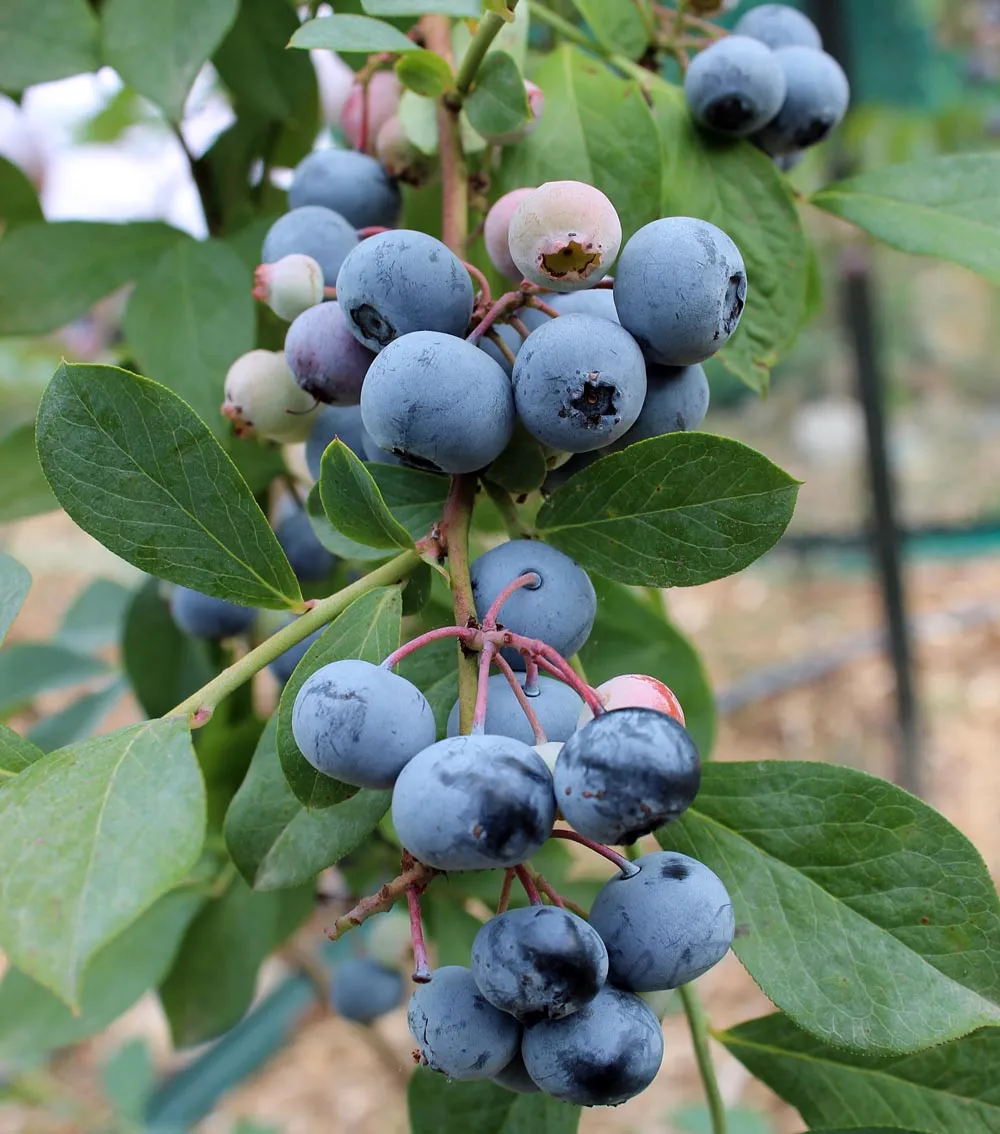
Watch the Birds
Birds are very fond of blueberries. They will steal all the blueberries on your bush if you don't have a way to deter them. We put up three different types of bird netting this year to see which one works better for our garden. My husband used T-posts and PVC for the frames and draped the bird netting over the frame, so we can harvest the blueberries inside the frames easily.
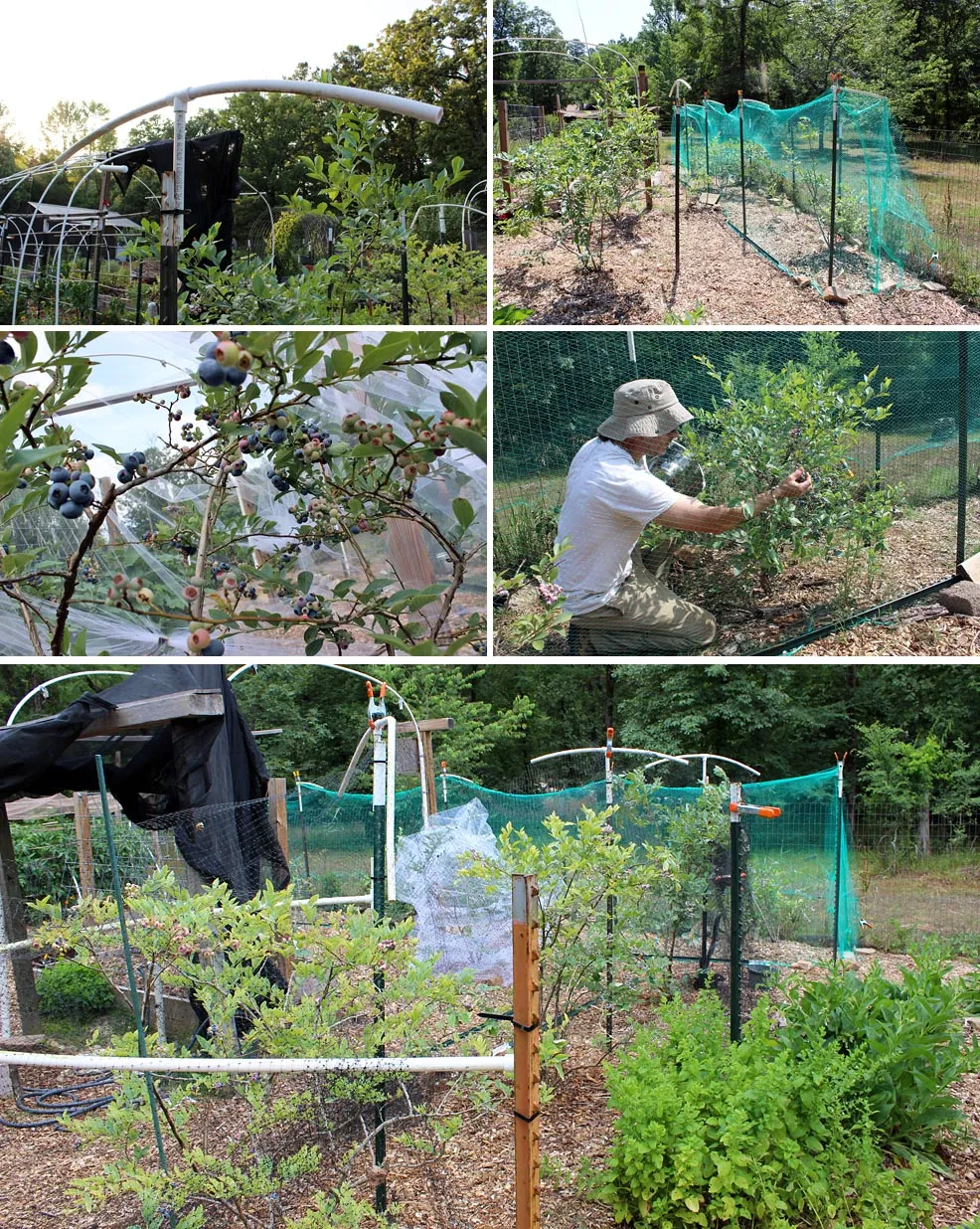
Early Producer
Blueberry bushes usually start producing berries in the second year. This is a whole lot earlier than fruit trees. If you are just starting to install a garden or planting an orchard, it's a good idea to include blueberries for early production. You can harvest blueberries throughout the Summer, while waiting for your young fruit trees to establish themselves and start producing fruit.
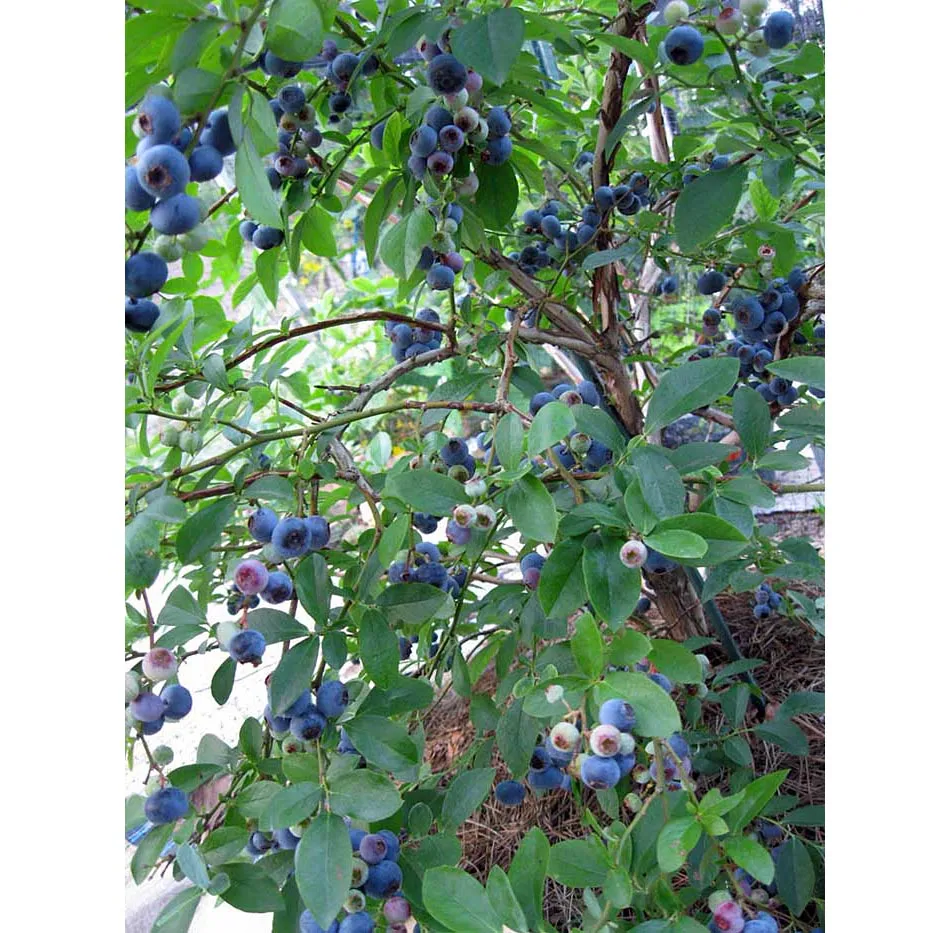
All photos come from my food forest
Photo copyright: @thelaundrylady
If you find my post helpful, please upvote, resteem and comment. I would love to hear from you.

I am honored to be an official passenger on the #ecotrain, a group of great people who are working hard to make this world a better place. Check out the previous ecoTrain magazines at @ecoTrain.
